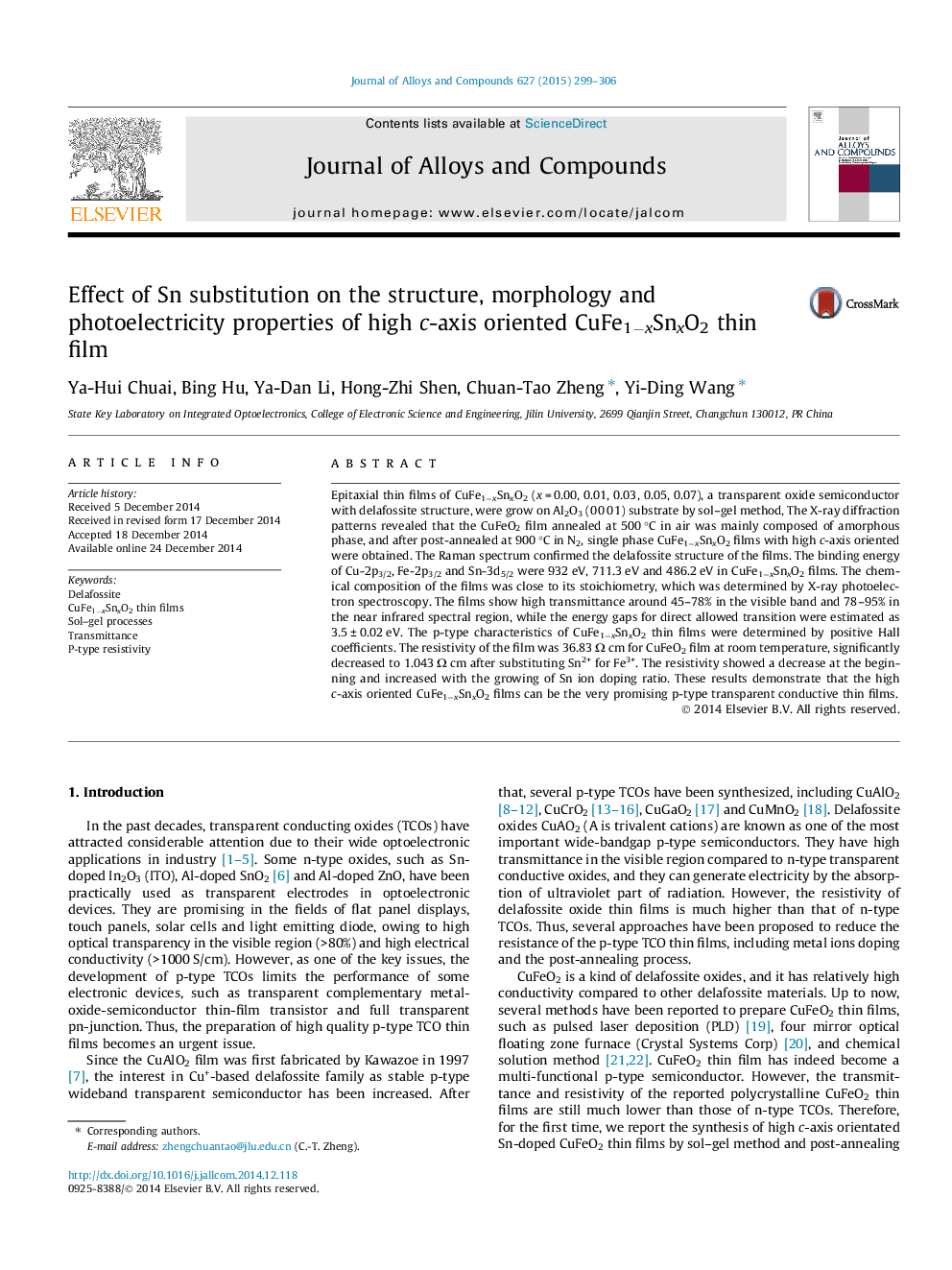| Article ID | Journal | Published Year | Pages | File Type |
|---|---|---|---|---|
| 1610012 | Journal of Alloys and Compounds | 2015 | 8 Pages |
Abstract
Epitaxial thin films of CuFe1âxSnxO2 (x = 0.00, 0.01, 0.03, 0.05, 0.07), a transparent oxide semiconductor with delafossite structure, were grow on Al2O3 (0 0 0 1) substrate by sol-gel method, The X-ray diffraction patterns revealed that the CuFeO2 film annealed at 500 °C in air was mainly composed of amorphous phase, and after post-annealed at 900 °C in N2, single phase CuFe1âxSnxO2 films with high c-axis oriented were obtained. The Raman spectrum confirmed the delafossite structure of the films. The binding energy of Cu-2p3/2, Fe-2p3/2 and Sn-3d5/2 were 932 eV, 711.3 eV and 486.2 eV in CuFe1âxSnxO2 films. The chemical composition of the films was close to its stoichiometry, which was determined by X-ray photoelectron spectroscopy. The films show high transmittance around 45-78% in the visible band and 78-95% in the near infrared spectral region, while the energy gaps for direct allowed transition were estimated as 3.5 ± 0.02 eV. The p-type characteristics of CuFe1âxSnxO2 thin films were determined by positive Hall coefficients. The resistivity of the film was 36.83 Ω cm for CuFeO2 film at room temperature, significantly decreased to 1.043 Ω cm after substituting Sn2+ for Fe3+. The resistivity showed a decrease at the beginning and increased with the growing of Sn ion doping ratio. These results demonstrate that the high c-axis oriented CuFe1âxSnxO2 films can be the very promising p-type transparent conductive thin films.
Related Topics
Physical Sciences and Engineering
Materials Science
Metals and Alloys
Authors
Ya-Hui Chuai, Bing Hu, Ya-Dan Li, Hong-Zhi Shen, Chuan-Tao Zheng, Yi-Ding Wang,
